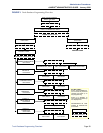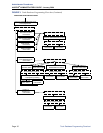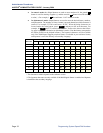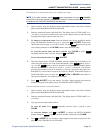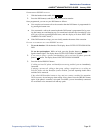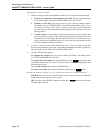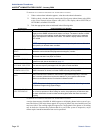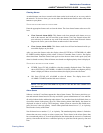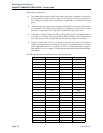
Page 37
Administrator Procedures
AXXESS
®
ADMINISTRATOR’S GUIDE – January 2004
Managing System and Network Alarms
MANAGING SYSTEM AND NETWORK ALARMS
To allow one administrator to monitor multiple nodes, the system provides both system alarms
and network-wide alarms.
System Alarms
The system’s Alarm Reporting feature detects equipment failures. If there is a system failure
that affects service, a major alarm is displayed at all affected phones. If all Inter-Tel phones in
the system are inoperative, any alarm messages are sent to the system’s primary serial port (on
the CPU).
When a minor equipment failure occurs, a minor alarm is generated and appears on the pri-
mary attendant’s display and, if enabled, at administrators’ stations. If enabled in the Message
Print programming, the alarm also appears in the error/message report.
Alarms 1-99 indicate problems that can be corrected without calling service personnel. Alarms
100-199 (telephone system) and 200-299 (voice mail) require attention from service personnel.
Note that when a voice mail alarm is in effect, the telephone system may be functioning prop-
erly, but the Voice Processor may be inoperative.
Network Alarms
Each node has two flags which determine whether the node broadcasts or receives network-
wide alarms.
• The Send Network Alarms flag determines whether a node will broadcast alarms that
occur on that node to the rest of the network.
• The Receive Network Alarms flag determines whether the node will receive and dis-
play alarms sent by other nodes in the network.
To differentiate between network-wide and local alarms, network-wide alarms appear on
administrator phones preceded by “NET ALARM,” and local system alarms are preceded with
“SYS ALARM.” Network-wide alarms will override system alarms on an administrator’s
phone display.
On remote nodes, network-wide alarms will indicate the name of the node on which the alarm
occurred. The node name is obtained from the username.



